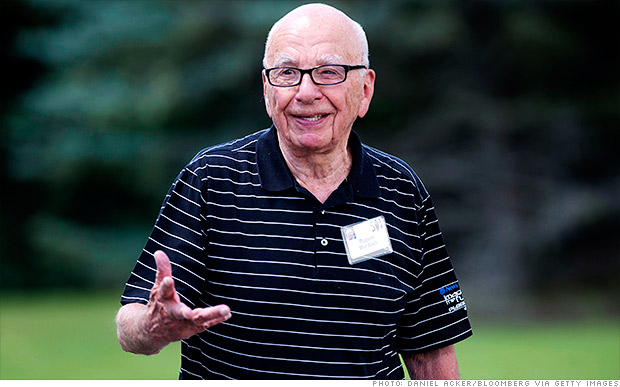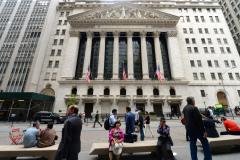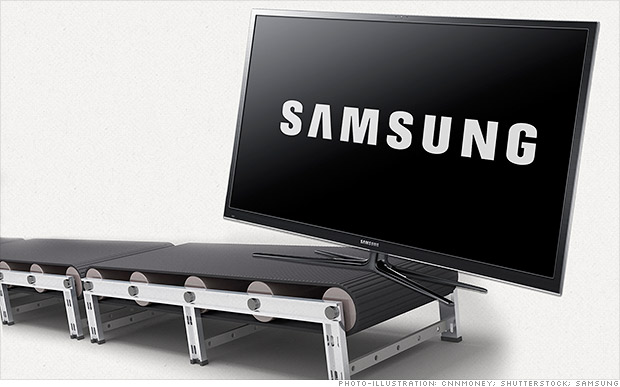A recent survey co-sponsored by the Hispanic Chamber of Commerce, which found that small businesses would likely drop their retirement plans if the Department of Labor moves ahead in redefining fiduciary, is “bogus,” and the survey questions are based on a “false premise,” Dennis Kelleher, president and CEO of Better Markets, told lawmakers Tuesday.
In a Tuesday letter, Kelleher told lawmakers that the financial services industry “is once again trying to organize congressional opposition to the DOL’s rulemaking using deceptive claims about the likely impact of the rule.”
Indeed, an industry official says that the survey is now being "shopped around" Capitol Hill to get lawmakers to write letters expressing concern about the harmful potential impact of the DOL rule proposal.
Sen. Maria Cantwell, D-Wash., chairwoman of the Senate Committee on Small Business and Entrepreneurship, is said to be drafting a letter to DOL opposing its fiduciary rulemaking, and is seeking other senators to sign on to it. A call to Cantwell's office was not returned by press time.
The Greenwald & Associates telephone survey was commissioned by the law firm Davis & Harman LLP “on behalf of financial services organizations that provide retirement services to millions of Americans,” according to Greenwald, and co-sponsored by the U.S. Hispanic Chamber of Commerce.
The survey found that nearly 30% of small businesses with a retirement plan said they would likely drop their plan, and nearly half would likely eliminate their employer contribution, if the DOL amended the definition of fiduciary under the Employee Retirement Income Security Act.
A DOL “expansion of fiduciary status” under its planned reproposal “will only impede the ability of small firms to offer their employees retirement-plan accounts, thus hindering American workers from saving for a reliable future,” Javier Palomarez, president and CEO of the U.S. Hispanic Chamber of Commerce, said when the report was released.
However, Barbara Roper, director of investor protection for the Consumer Federation of America, told ThinkAdvisor on Tuesday that the “financial services firm lobbyists have gotten really sophisticated at concocting these misinformation campaigns,” with the “’surveys’ and ‘studies’ that they produce looking credible.”
Regarding the Greenwald/Davis & Harman/Hispanic Chamber survey, Roper added that the survey is based on “an entirely false premise,” which is that “the DOL is contemplating a rule to prohibit ‘both retirement plan providers and the advisors who sell retirement plans to employers from assisting the employers in the selection and monitoring of the funds in the retirement plan.’”
Warned Roper: “Busy congressional offices without a lot of direct expertise on the issue may not see through the subterfuge.”
Kelleher’s letter, Roper said, points out “the fallacy behind the survey,” adding that she hopes the letter “will help keep members of Congress from echoing these misleading industry arguments.”
Kelleher told lawmakers in his letter that “there is simply no factual basis for the claim that the DOL is considering a rule that would prohibit anyone from assisting employers in connection with the retirement plans they offer to their employees.” /* .premium-promo { border: 1px solid #ddd; padding: 10px; margin: 0 10px 10px 0; width: 200px; float: left; } .premium-promo li, .premium-promo ul { list-style-type: none; margin: 0; padding: 0; } .premium-promo li { margin: 0 0 10px; padding: 0 0 10px; border-bottom: 1px dotted #ddd; } .premium-promo h3 { text-transform: uppercase; font-size: 11px; } .premium-promo h4 { font-size: 16px; } .premium-promo a { text-decoration: none !important; } .premium-promo .btn { background: #0069a1; border-radius: 4px; display: inline-block; padding: 5px 10px; clear: both; color: #fff; font-weight: bold; } .premium-promo .btn:hover { background: #034c92; } */ Even if a fiduciary duty were to apply to retirement plan providers and the advisors who sell retirement plans to employers, he continued, “plan providers and advisors would still be allowed to assist in the selection and monitoring of the funds in the plan. Any assistance they provided would simply have to be in the best interests of the plans and the plan participants. The fact that the survey questions are based on a false premise renders the survey findings completely irrelevant to the consideration of potential reforms to the ERISA fiduciary duty standard.”
However, Kent Mason, a partner with Davis & Harman in Washington, told ThinkAdvisor in an email that Kelleher's "letter does not reflect an understanding of how the retirement plan rules work."
Kelleher's letter, Mason said, "claims that under the DOL rules, an advisor would be in compliance if the advisor simply acts in the best interest of the plan and the plan participants. This is clearly incorrect. Under the DOL’s 'prohibited transaction rules,' a fiduciary generally is prohibited from assisting a plan or participant if such fiduciary’s compensation could be affected in any way by the decision made by the plan or participant, even if the fiduciary’s assistance is in the best interest of the plan and the plan participants. By overlooking this issue, the letter does not address the key issue under the DOL proposal that has been discussed for the past 3 ½ years."
Kelleher added in his letter to lawmakers that the apparent goal of the survey “is to create groundless fears that the rule will have profoundly negative consequences, thus generating enough controversy around the rule to keep it bottled up indefinitely. If successful, this tactic will perpetuate a system in which those with substantial conflicts of interest are permitted to offer recommendations that do not promote their clients’ best interests, even though tens of millions of Americans saving for retirement believe otherwise.”
The White House’s National Economic Council is performing “industry outreach” regarding DOL’s fiduciary redraft. DOL has pushed release of the redraft until January.
---
Related on ThinkAdvisor:







 NEW YORK (CNNMoney) Turner Sports and Fox Sports One. The Warner Bros. studio and the 20th Century Fox studio. The TBS and FX cable channels.
NEW YORK (CNNMoney) Turner Sports and Fox Sports One. The Warner Bros. studio and the 20th Century Fox studio. The TBS and FX cable channels. 
 Elise Amendola/AP WASHINGTON -- U.S. consumer credit rose in May, a sign that easy monetary policy was providing substantial support for the economy. Total consumer credit increased by $19.6 billion to $3.19 trillion, the Federal Reserve said on Tuesday. That meant consumer debt was growing at a 7.4 percent annual rate. Analysts polled by Reuters expected an increase of $20 billion in the month. Non-revolving credit, which includes auto loans as well as student loans made by the government, drove the increase, rising by $17.8 billion. Revolving credit, which mostly measures credit card use, increased by $1.8 billion.
Elise Amendola/AP WASHINGTON -- U.S. consumer credit rose in May, a sign that easy monetary policy was providing substantial support for the economy. Total consumer credit increased by $19.6 billion to $3.19 trillion, the Federal Reserve said on Tuesday. That meant consumer debt was growing at a 7.4 percent annual rate. Analysts polled by Reuters expected an increase of $20 billion in the month. Non-revolving credit, which includes auto loans as well as student loans made by the government, drove the increase, rising by $17.8 billion. Revolving credit, which mostly measures credit card use, increased by $1.8 billion.  Related BZSUM Markets Mostly Lower; Wells Fargo Posts In-Line Profit #PreMarket Primer: Friday, July 11: European Banks May Not Be Out Of The Woods Yet
Related BZSUM Markets Mostly Lower; Wells Fargo Posts In-Line Profit #PreMarket Primer: Friday, July 11: European Banks May Not Be Out Of The Woods Yet  ASSOCIATED PRESS
ASSOCIATED PRESS 
 It's the end of the line for Samsung's plasma TV's. NEW YORK (CNNMoney) The plasma TV business is fading to black.
It's the end of the line for Samsung's plasma TV's. NEW YORK (CNNMoney) The plasma TV business is fading to black.  Big win for broadcasters against Aereo
Big win for broadcasters against Aereo 
 Popular Posts: Hottest Energy Stocks Now – TPLM HK KOG SD10 Best “Strong Buy” Stocks — BITA SHPG TRGP and moreBiggest Movers in Healthcare Stocks Now – TARO PCRX FMS INO Recent Posts: Hottest Healthcare Stocks Now – PRGO ISIS WST CELG Biggest Movers in Basic Materials Stocks Now – TX GPRE SHLM GLT Hottest Technology Stocks Now – TYL WBMD MDSO TQNT View All Posts 5 Stocks With Bad Earnings Growth — BBRY TCI ZQK RBCN MGPI
Popular Posts: Hottest Energy Stocks Now – TPLM HK KOG SD10 Best “Strong Buy” Stocks — BITA SHPG TRGP and moreBiggest Movers in Healthcare Stocks Now – TARO PCRX FMS INO Recent Posts: Hottest Healthcare Stocks Now – PRGO ISIS WST CELG Biggest Movers in Basic Materials Stocks Now – TX GPRE SHLM GLT Hottest Technology Stocks Now – TYL WBMD MDSO TQNT View All Posts 5 Stocks With Bad Earnings Growth — BBRY TCI ZQK RBCN MGPI